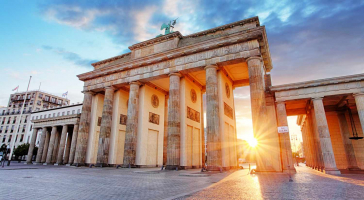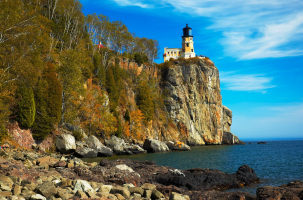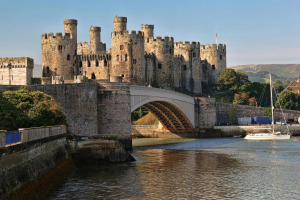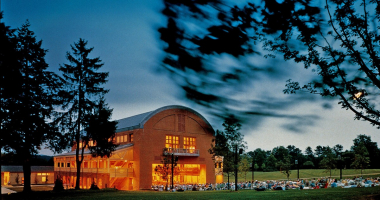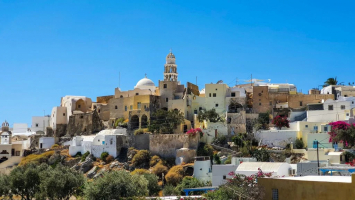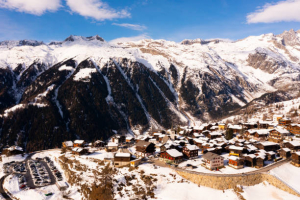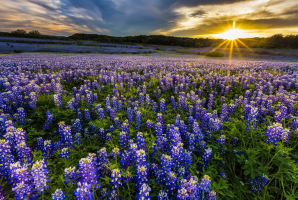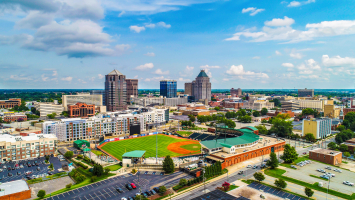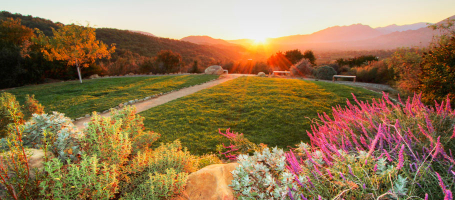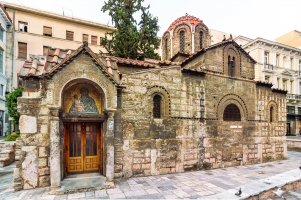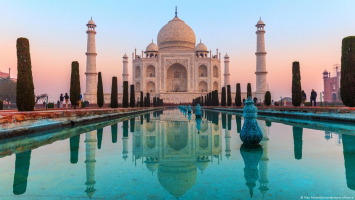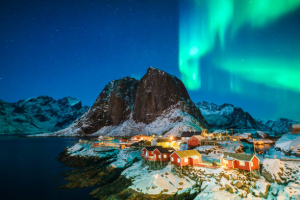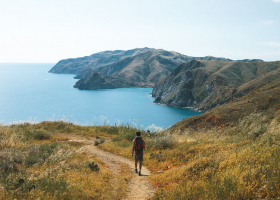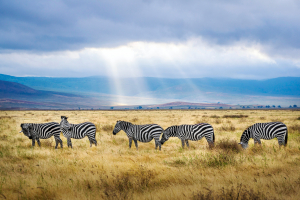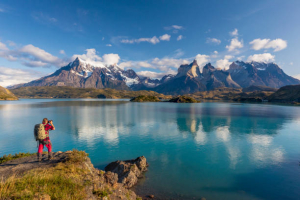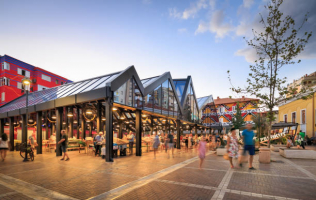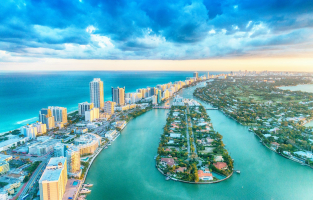Top 12 Best Things to Do in France
Travelers envision the Eiffel Tower, elegant Parisian boulevards, the sunny French Riviera, and picturesque rural towns when planning a trip to France. ... read more...However, the most memorable moments of a vacation frequently occur when participating in local activities rather than merely sightseeing. These unique encounters and short excursions go beyond simply visiting a monument or museum; they capture the soul of the location. Discover the nation from a new perspective and make the most of your trip with this list of the best things to do in France.
-
Paris is an iconic city, a melting pot of everything artistic and exquisite, with a global reputation for culinary, fashion, architectural, and fine arts brilliance. The Seine, which runs through the heart of Paris, is bordered by several of the city's most iconic landmarks. Whether it's day or night, when the river's ripples mirror the lit monuments, stepping out on the water sees first-time tourists fall in love with Paris' attractions and return visitors - and even locals - rediscover the magic. After driving in from the harbor (around two hours), go to the streets to explore the city's major landmarks: Pass through the Arc de Triomphe and find yourself in the shadow of the Eiffel Tower.
The history and culture here only add to the attractiveness. Cruise to Paris to enjoy the cold morning air outside the Gothic Notre Dame cathedral and to view artwork ranging from prehistoric to postmodern in the Louvre. In the evening, stroll along the lamplit pathways as wooden tables and rattan seats flow onto the pavements and terraces. Take a seat, order a drink of vin rouge, and a dish of pate on toast.
The Batobus runs a 14-hour circle that is less touristic and more adaptable than regular sightseeing cruises. The Eiffel Tower; the Invalides military complex (and the city's most beautiful bridge, Pont Alexandre III); the Musée d'Orsay, with impressionist, post-impressionist, and art nouveau masterpieces; the chic cafes and boutiques of St-Germain des Près; Notre Dame cathedral; Jardin des Plantes (botanic gardens) bordering the Latin Quarter; and Paris' city hall, the Hôtel de Ville (adjacent to Le Marais' hip bars). It's the ultimate Paris ticket.
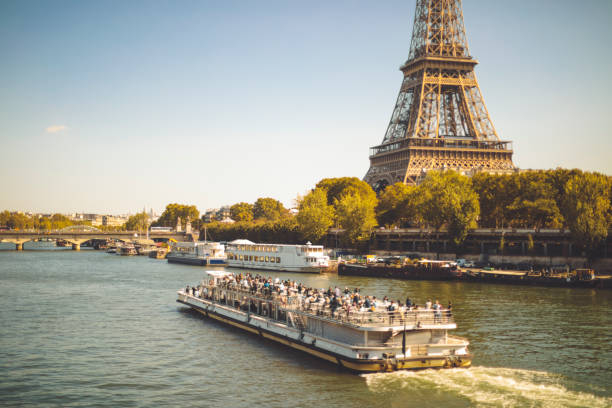
istockphoto 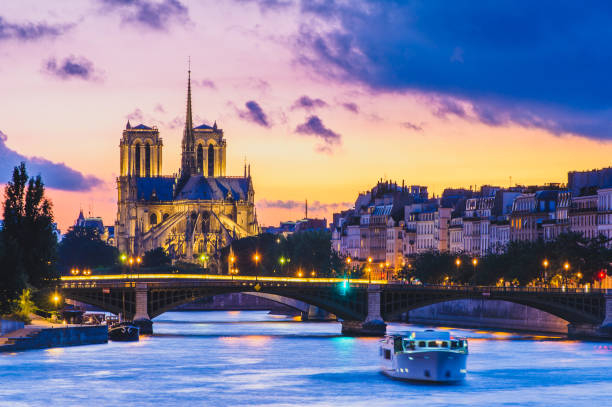
istockphoto -
Lavender is the flower that best defines France, owing to the immense carpets of purple blooms that blanket the landscape of Provence. Get out among the purple haze, inhale the delicious summer winds, and explore magnificent hilltop villages, historic churches, and attractive valleys.
Lavender encounters are plentiful from mid-June and mid-August, particularly in the Luberon valley, the Plateau de Valensole near Manosque, and the Sault region. This region has farmed lavender for hundreds of years, and bundles of chopped lavender, known locally as paille (straw), are still packed tightly into steam stills to extract its essential oils. The huile essentielle de lavande de Haute-Provence (Haute-Provence lavender oil) has been protected by its own appellation d'origine contrôlée (AOC) since 1997, however the great majority of farms produce lavandin, a higher-yielding hybrid.
This hybrid between English and Portuguese lavender yields five times as much oil as fine lavender, or lavande. Only a few farms continue to plant the more delicate lavande varieties, which cost significantly higher prices and (according to connoisseurs) have a far finer scent. Many farms and distilleries are open for visits; details may be found on the Routes de la Lavande website, and an associated booklet is available from local tourism offices. Lavender festivals are also held in Valensole (mid-July), Sault (mid-August), and Valréas (early August).
Idyllic locations to snap a quintessential photo also include Abbaye Notre-Dame de Sénanque, a 12th-century abbey framed by lavender; the blooming fields around the honey-colored village of Sault; and farms and distilleries on the Valensole plateau, beneath the scoured limestone summit of Mont Ventoux.
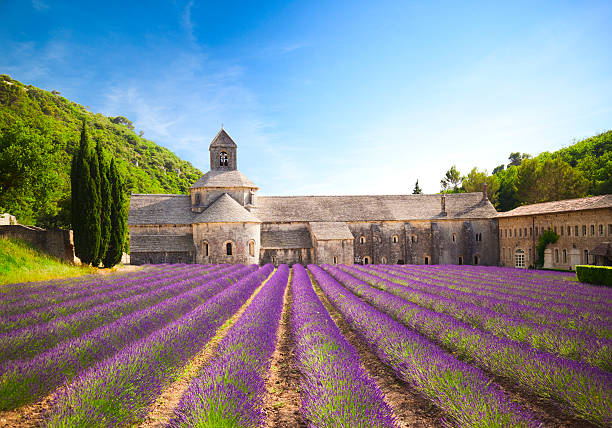
istockphoto 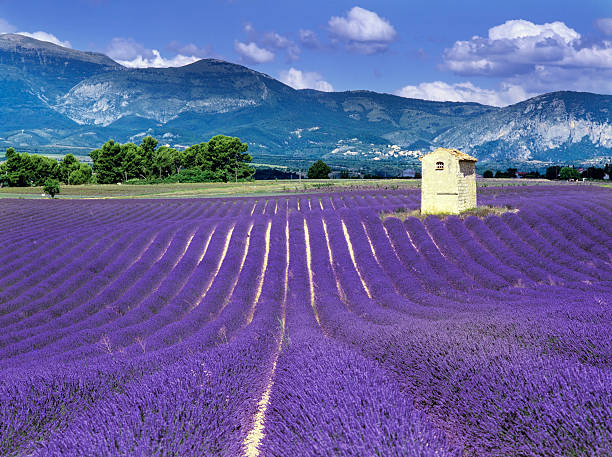
istockphoto -
There is nothing quite like a sunset in Paris! Whether you are in Paris for a day or a week, you will want to view the sunset since it is a gorgeous and amazing sight. The soft lighting provides an ethereal look in the early evening. Golden hues over the horizon provide a romantic touch to the landscapes during this specific time of day (late afternoon until night). As the sun sets, the views from each level of the tower become even more beautiful, with the city's landmarks lighted and the Seine River reflecting the brilliant hues of sunset. Another perk is that the Eiffel Tower is decked out with beautiful lights that dazzle for five minutes on the hour every evening.
Watch the sunset while dining at one of the Eiffel Tower restaurants: Madame Brasserie, the contemporary-style brasserie on the first level that serves a seasonal menu with a focus on local ingredients, or Le Jules Verne gastronomic restaurant on the second level that serves exceptional modern French cuisine. Both restaurants' dining areas provide stunning views of the Paris skyline. You may request a window seat when making a reservation at Le Jules Verne. If you want to check out this spot for sunset in Paris, make sure to arrive a full hour before the sun is about to set so that you can prepare and have enough time to get up the lifts and walk around a bit before the big moment.
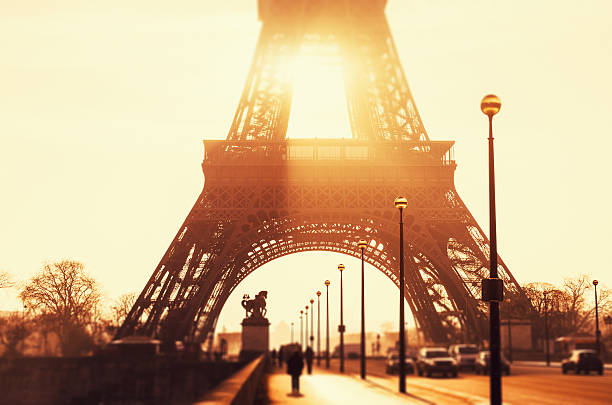
istockphoto 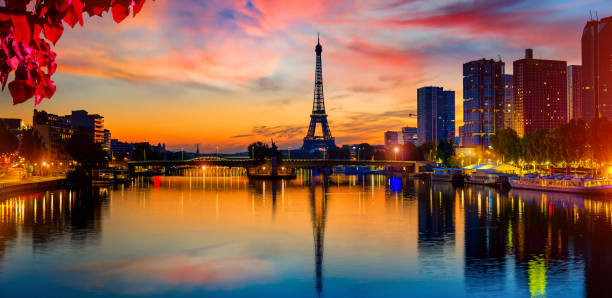
istockphoto -
Narrow lanes, amazing medieval structures, hidden relics, and contemporary Parisian living in the midst of extraordinary remains of the past. This walk will take you through some of the must-see landmarks as well as the local places in between in a fun and educational way. The Quartier Latin, Île Saint-Louis, and Le Marais are all lovely areas where tourists may immerse themselves in the atmosphere of medieval Paris. Begin your exploration on the Left Bank in the Latin Sector, which has served as the city's academic quarter since the Middle Ages. After exploring this vibrant neighborhood's diverse shops and bookshops, cross the Seine River via the Petit Pont bridge and travel to the Île de la Cité to appreciate the Notre-Dame Cathedral's façade.
The Pont Saint-Louis bridge connects the Île de la Cité to another Seine River island, the Île Saint-Louis, a place rich with old-world beauty. Explore the peaceful pedestrian walkways and charming stores on the Rue Saint-Louis en l'Île. Visit the Eglise Saint-Louis en l'Île, a magnificent Baroque church dedicated to Saint Louis (King Louis IX), and then indulge in an ice cream cone from the neighboring Glacier Berthillon. Cross the Pont Marie bridge to reach Le Marais, an evocative historic region dotted with ancient palaces and villas. Take a leisurely stroll around the tranquil tree-shaded paths of the Place de Vosges, a graceful square lined with elegant 17th-century aristocratic residences, and then amble along the Rue des Francs Bourgeois, a narrow street with many fashionable shops.
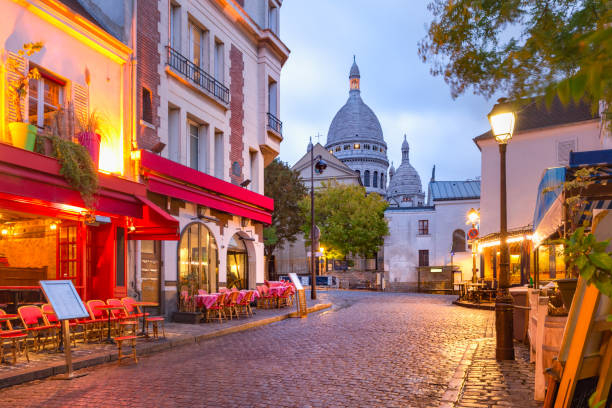
istockphoto 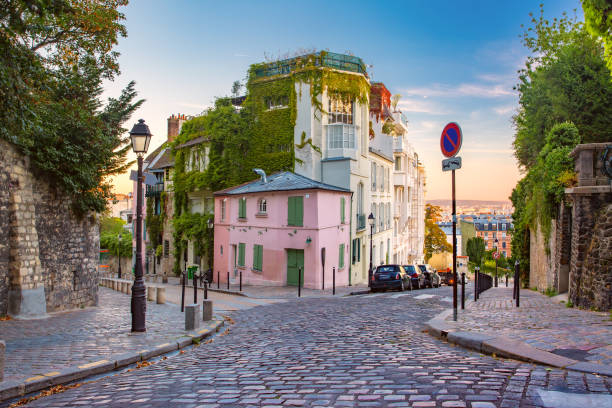
istockphoto -
The Abbaye du Mont-Saint-Michel looks to be a vision from heaven, soaring above its position on a rocky island off the Normandy coast. Mont Saint-Michel is renowned as the "Pyramid of the Seas" because of its surreal beauty. Since the 11th century, the island's magnificent Gothic abbey has served as a halt on the "Way of Saint James" pilgrimage to Santiago de Compostela. At low tide, medieval pilgrims trekked through the sandbanks of the Bay of Saint-Michel to reach Mont Saint-Michel. The bay crossing was the final leg of the lengthy, hard foot trip to this important Christian site.
The "Chemins du Mont-Saint-Michel" pilgrimage routes travel to Mont-Saint-Michel from a variety of beginning places, including Paris, Rouen, and Tours. These routes go on to the Spanish city of Santiago de Compostela. Visitors now can walk in the footsteps of medieval pilgrims for a powerful spiritual experience. Today's pilgrims arrive on foot, as has been the case for generations. The walk across the bay takes around two hours and must be done with the assistance of an experienced guide. It is not safe to attempt the bay crossing without the assistance of a guide. Quicksand and forceful fast-moving tides define the Bay of Mont Saint-Michel and its sandbanks.
The bay's high tide transforms Mont Saint-Michel into an island for around one hour each day due to its vast tidal range (15 kilometers in each direction). Pilgrims arriving to the abbey are greeted by the awe-inspiring atmosphere of an 11th- to 13th-century chapel. Religious services (Laudes, Mass, and Vespers) are held three times a day at the abbey church by the Fraternités Monastiques de Jérusalem. The liturgy is performed through chants, which are notable for their melodious polyphonic melodies. Many pilgrims visit Mont Saint-Michel on Saint Michael's Day, which falls at the end of September. This Archangel Michael celebration comprises many religious activities in the Abbey Church. A solemn mass is held on the nearest Sunday (before or after) Saint Michael's Day, and morning prayers and mass take place on Saint Michael's Day (September 29th).
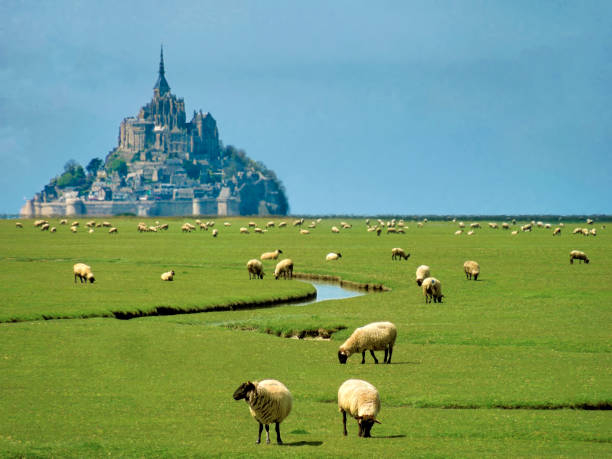
istockphoto 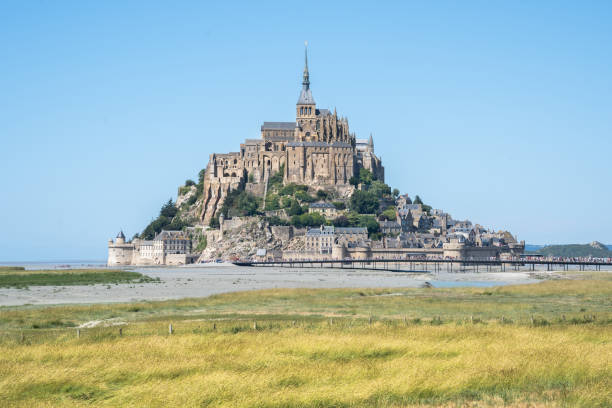
istockphoto -
A soirée at the Château de Versailles provides a look into the realm of French monarchs and their opulent court. Visitors may attend the Royal Serenade, a stunning event hosted in the château's Grand Apartments (Hercules Room, Hall of the Royal Chapel, King's Guard Room) and the luxurious Hall of Mirrors, every Saturday evening from mid-June to mid-September.
The Royal Serenade recreates an Ancien Régime setting in France, replete with historical clothes, Baroque music, and dance. A re-enactment of the King's dressing ritual and a court ball are part of this exceptional occasion. Audiences are entertained by the Folies Françoises musical ensemble and the Compagnie de Danse l'Éventail dancing troupe.
Before or after the Royal Serenade, visitors can take a tour of the château gardens. From April through October, the Château de Versailles hosts Musical Fountain Shows, which feature its spectacular fountains dancing to the melodies of Baroque music. From mid-June to mid-September, after sundown on Saturday evenings, the garden's groves are lighted by torches and candles for the Night Fountain Shows, which include music and fireworks. This event is reminiscent of the lavish festivals held under the reigns of Louis XIV, Louis XVI, and Marie-Antoinette.
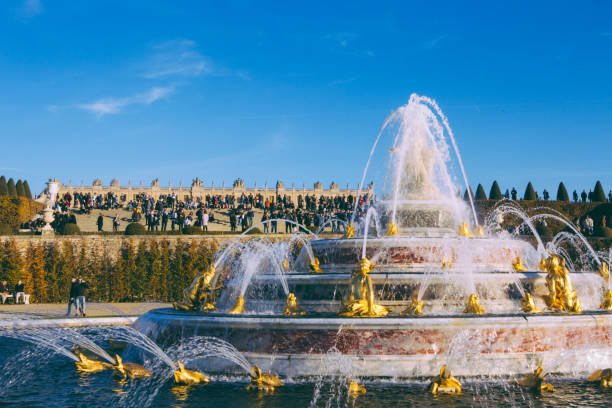
istockphoto 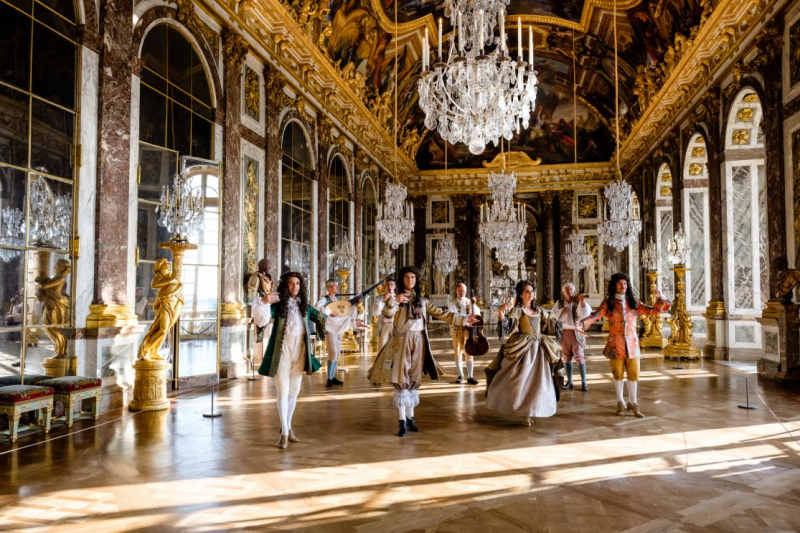
istockphoto -
The French gourmet dinner, a cornerstone of Gallic culture, has been placed on the UNESCO list of Intangible Cultural Heritage. Each region of France has its own particular culinary style, but the Burgundy region is home to some of the most well-known regional foods in France, including escargot, gougères (cheese puffs), Coq au Vin (chicken stew), and Boeuf Bourguignon (Beef Burgundy). Cooking workshops immerse you in the Burgundian way of life, with excursions to local markets to buy for materials, tuition in cooking traditional delicacies, and then relishing the delectable results. In the Burgundy area, you may pick from a variety of culinary programs and holidays.
The Cook's Atelier in Beaune is operated by American expats Marjorie Taylor and Kendall Smith Franchini, a mother-daughter team. Participants in their one-day cooking classes or six-day culinary holiday are introduced to the wonders of Burgundian cuisine and the Burgundy lifestyle. Katherine Frelon's Culinary School in Marigny-le-Cahouet provides seven-day culinary holidays in La Ferme de la Lochere, a 400-year-old farmhouse. The travels to Dijon and Semur-en-Auxois, as well as lunch at a Michelin-starred restaurant, are highlights. Robert Ash's five-day cooking program at Rue du Lac includes hands-on workshops, market excursions, and free time to explore the property's garden, sun terrace, and swimming pool. In addition to the culinary sessions, lodging is given at a lovely renovated farmhouse in the Burgundy region of Beaujolais.
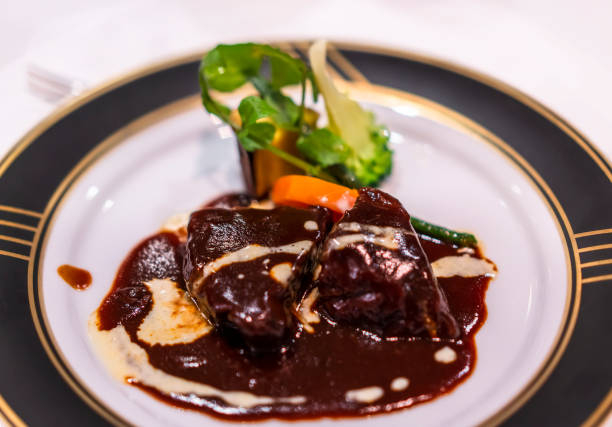
istockphoto 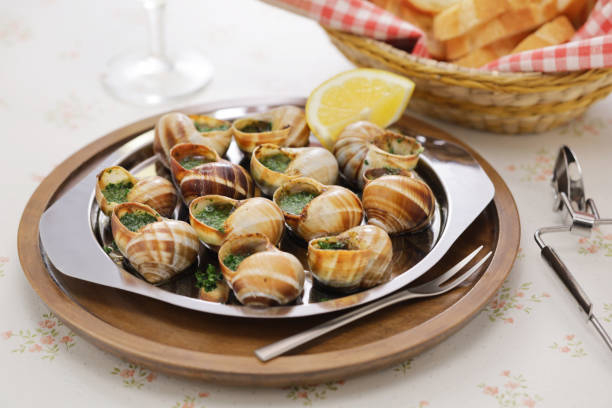
istockphoto -
Bordeaux has some of the most beautiful landscapes in France, with vine-covered rolling hills, towering castles, and charming old villages. Cyclists can arrange their own self-guided route or work with a tour provider to plan a cycling itinerary. The Roger Lapébie cycle trail in the Entre-deux-Mers region, known for its rich natural surroundings, is a popular cycling route from Bordeaux. Part of this route follows the serene tree-lined Canal de Deux Mers. The Roger Lapébie walk goes to Créon, an intriguing medieval village that was once completely defended, some 20 kilometers from Bordeaux.
Another famous bike route is the 50-kilometer journey from Bordeaux to Saint-Émilion, a lovely medieval hamlet on the UNESCO World Heritage List for its historic monasteries and cathedrals. Visitors should also make time to see the various sights of Bordeaux, a UNESCO World Heritage Site with over 300 designated Historic Monuments. The Château de Rauzan, located 45 kilometers from Bordeaux, is a beautiful ancient castle. This medieval fortified fortress was built in the 13th century and has been restored several times since then. The Château de Rauzan is available to the public for tours, including access to the tower, which provides stunning views over the hamlet and surrounding countryside. Shorter rides in the Bordeaux region include the six-kilometer route from Bordeaux to Pessac, where visitors can admire Le Corbusier architecture, and the 29-kilometer route from Bordeaux to Margaux, a village known for its gastronomy.
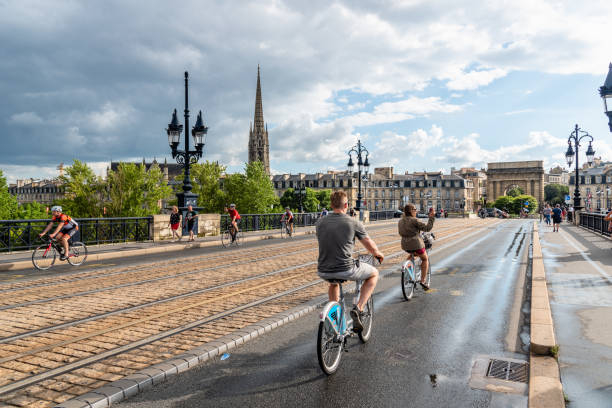
istockphoto 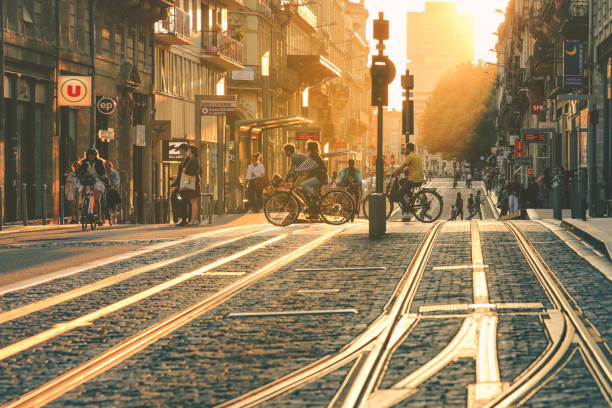
istockphoto -
Spend a wonderful summer evening at the Château de Vaux-le-Vicomte, which is less than an hour by train and shuttle from Paris. This Historic Monument is a 17th-century architectural marvel designed by Louis Le Vau for Nicolas Fouquet, Louis XIV's Superintendent of Finance. The château is notably famous for its grounds, which were designed by André Le Nôtre. The château's 33-hectare grounds constitute the original Jardin à la française (French formal garden), which became renowned in Europe throughout the 17th century, with its geometric dimensions, harmonious arrangement, and dozens of fountains.
Thousands of candles illuminate the château and grounds on Saturday nights from mid-May to October 1st (including Fridays from early July through August) for the "Soirées aux Chandelles" (Candlelit Evenings), recreating the atmosphere of a renowned fête held at the château on August 17, 1661. This spectacular evening immerses guests in the enchantment of the Grand Siècle. Les Charmilles (only open on Candlelit Evenings) and Jean de La Fontaine's Table, two fine-dining establishments, enabling customers to take in the gorgeous landscape while having a delicious dinner. Candlelit Evenings begin at 7 p.m. and end at midnight, with fireworks at 11 p.m.
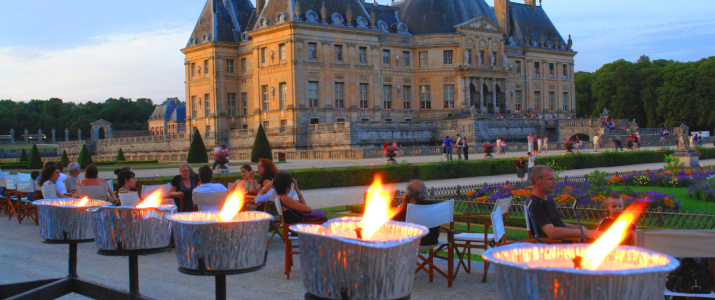
Time Out 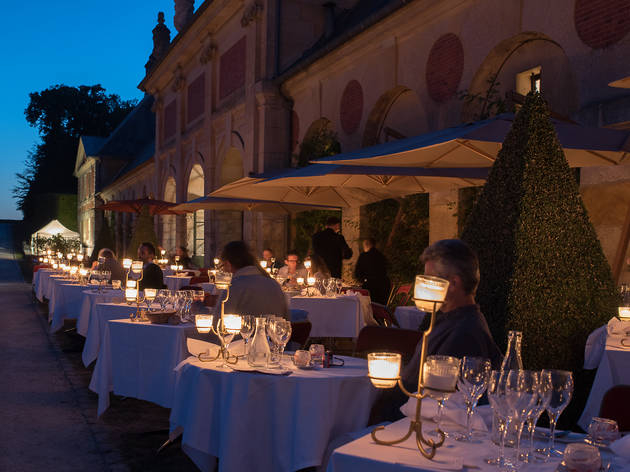
Time Out -
Beachgoers in France have an astounding array of beach places to select from. The nation has lovely coasts along three separate coastlines due to its hexagonal shape: the Mediterranean Sea, the Atlantic Ocean, and the English Channel. There is something for everyone at France's best beach resorts. Travelers can arrange lavish vacations in fashionable resort cities, fun-filled outdoor activities vacations, or tranquil escapes in untouched natural areas. The French Riviera is the place to go for glamor and elegance. Because of its lovely azure waves, this stunning stretch of Mediterranean coastline is known as the Côte d'Azur ("Coast of Blue"). Highlights include sun-drenched Saint-Tropez, Antibes-Juan-les-Pins' broad sandy coastlines, and Cannes' luxury beach clubs.
Outside of the French Riviera, on the Atlantic Coast, Southern France boasts beautiful beaches. The Plage de l'Espiguette (near Montpellier), a protected natural reserve with pristine sand dunes and a broad sandy beachfront, and the aristocratic town of Biarritz, a go-to for surfers and discerning holiday-goers, are among the top beach locations in the South of France. Those looking for a classy beach holiday may like the Belle Époque beachfront resorts in Northern France's English Channel. Deauville and Trouville on Normandy's Côte Fleurie are known for its sandy beaches, old-fashioned boardwalks, and cultural activities. Dinard, another exquisite Belle Époque resort on Brittany's Emerald Coast, enchants guests with its luxurious seaside houses and magnificent sandy beaches.
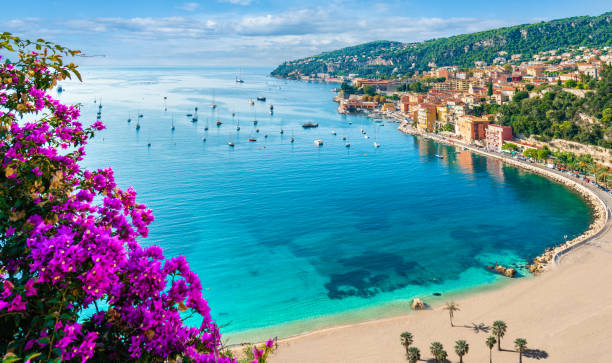
istockphoto 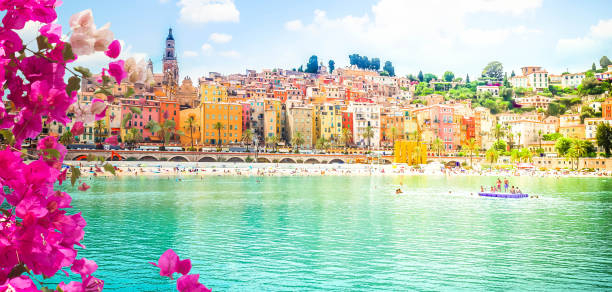
istockphoto -
The Auvergne, located in the heart of France, is a one-of-a-kind region with a well-preserved natural environment that provides tourists with a true feast for both body and mind. With 109 springs (including Volvic), almost a hundred volcanoes, and more than 20,000 kilometers of canals, it is one of Europe's largest protected natural reserves. The Auvergne Volcanoes Regional Natural Park beckons hikers to the peaks of Plomb du Cantal, Puy de Dôme, Puy Mary, and Puy de Sancy. The Livradois Forez Regional Natural Park has thousands of kilometers of hiking paths that wind through woods, massifs, and glacial valleys.
Many French visitors travel to Auvergne to get away from it all. The tranquil setting and breathtaking views encourage relaxation and outdoor activities. Two of France's major regional parks are among the highlights. Outdoor enthusiasts will find enough to do in the Volcans d'Auvergne Regional Park. This is one of the greatest spots to go hiking, cycling, and horseback riding in France. Freshwater rivers and streams in the park are also suitable for fishing. Swimming and boating are popular summer activities on the tranquil Lake Aydat.
With its incredible variety, the Regional Park of Livradois-Forez offers several options for bird-watching, nature hikes, and trekking. Summertime events in Auvergne include the Concerts de Vollore classical music concerts, the International Street Theatre Festival in August, and the Fêtes Renaissance du Roi de l'Oiseau (King of the Bird Renaissance Festival) in September. Visitors may enjoy outdoor activities as well as cultural events whether they stay in a city or in the countryside.
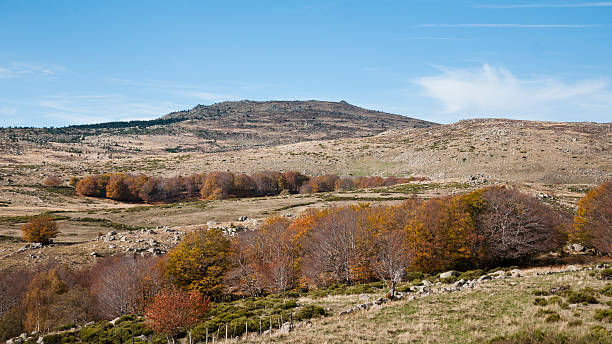
istockphoto 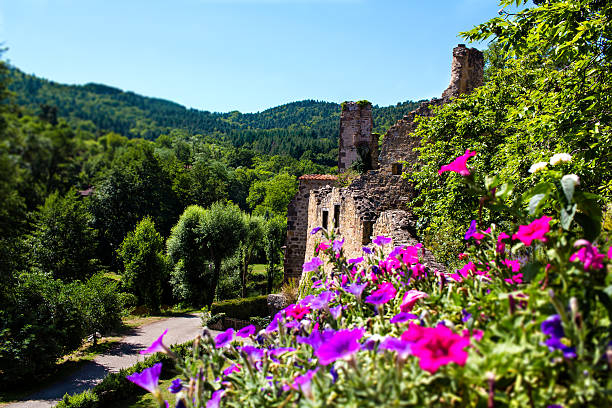
istockphoto -
The beautiful castles and aristocratic estates of France's Loire Valley, southwest of Paris and surrounded by vineyards, form a massive Unesco World Heritage site that is even more fascinating when viewed from the air. The Montgolfier brothers of France created the montgolfière (hot-air balloon) in the 18th century, and more current modes of transportation still can't rival with floating with the breeze while drinking in the vistas in peaceful stillness (apart from the hiss of the burner). Climb aboard Ballons de Loire for a mind-blowing journey in a hot air balloon above Sologne, Loire, and Loiret, departing from Orléans, Olivet, Meung-sur-Loire, Beaugency, Jouy-le-Potier, or private land.
Allow yourself to be carried away by the wind; all you have to do is observe the magnificent landscape of the Loire Valley, and you could even see some châteaux and other hidden noble mansions in the region. Would you want to fly over the Orléans metropolitan area? The answer is available at Montgolfière Orléans en Métropole! After assisting to inflate a hot-air balloon, climb aboard for a 1 1/2 hour ride over the Orléans conurbation and its neighboring surroundings. As you float by, take in the city's iconic landmarks from above, such as the magnificent Sainte-Croix d'Orléans Cathedral and the famed Place du Martroi with its Joan of Arc monument.
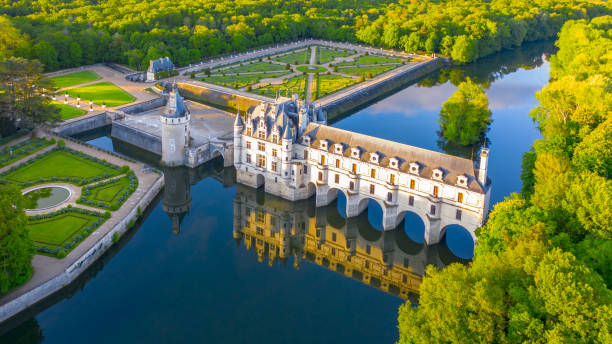
istockphoto 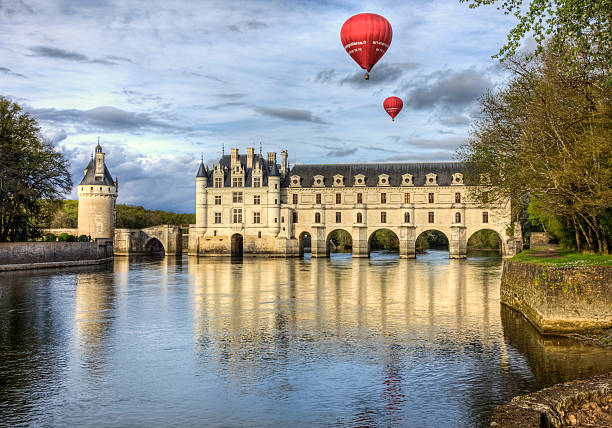
istockphoto














